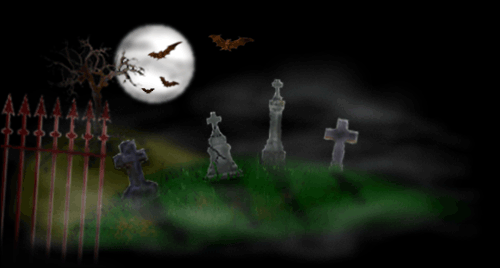|
How Halloween is Celebrated Around the World
IRELAND
Halloween is very popular in Ireland, where it is said to have originated, and is known in Irish as "Oíche Shamhna"
or "Samhain Night". Pre-Christian Celts had an autumn festival, Samhain, "End of Summer", a pastoral and agricultural "fire
festival" or feast, when the dead revisited the mortal world, and large communal bonfires would hence be lit to ward off evil
spirits.
On Halloween night in present-day Ireland, adults and children dress up as creatures from the underworld (e.g., ghosts,
ghouls, zombies, witches and goblins), light bonfires, and enjoy spectacular fireworks displays (despite the fact that such
displays are usually illegal). The children knock on the neighbors' doors, in order to gather fruit, nuts, and sweets for
the Halloween festival. Salt was once sprinkled in the hair of the children to protect against evil spirits.
The houses are frequently adorned with pumpkins or turnips carved into scary faces; lights or candles are sometimes placed
inside the carvings to provide an eerie effect. The traditional Halloween cake in Ireland is the barmbrack, which is a fruit
bread. Each family member gets one slice. There is a piece of rag, a coin or a ring in each cake; if one gets the rag,
then financial prospects are doubtful. Getting a coin indicates a prosperous future, and getting a ring is a sure sign of
impending romance or continued happiness.
Games are often played, such as bobbing for apples, where apples, peanuts and other nuts and fruit and some small coins
are placed in a basin of water. The apples and nuts float, but the coins, which sink, are harder to catch. Everyone takes
turns catching as many items possible using only their mouths. In some households, the coins are embedded in the fruit for
the children to "earn" as they catch each apple. The Scottish and English have adapted the tradition to a game named "ducking",
in which a participant quickly dunks in a water-filled container in an attempt to get a prize, without being submerged too
long. Another common game involves the hands-free eating of an apple hung on a string attached to the ceiling.
Irish children have a week-long Halloween break from school; the last Monday in October is a public holiday given for Halloween
even though they often do not fall on the same day
 Scotland
Scotland, having a shared Gaelic culture with Ireland, has celebrated the festival of Samhain (pronounced Sow-win) robustly
for many centuries. The autumn festival is pre-Christian Celtic in origin, and is known in Scottish Gaelic as Oidhche Shamhna,
the “Summer's night.” During the fire festival, souls of the dead wander the Earth and are free to return
to the mortal world until dawn. Traditionally, bonfires and lanterns (samhnag in Scottish Gaelic) would be lit to ward
off the phantoms and evil spirits that emerge at midnight. The term Samhainn or Samhuinn is used for the harvest
feast, and an t-Samhain is used for the entire month of November.
In Scotland, folklore, including that of Halloween, revolves around the ancient Celtic belief in faeries (Sidhe, or Sith,
in modern Gaelic). Children who ventured out carried a traditional lantern (samhnag) with a devil face carved into
it to frighten away the evil spirits. Such Halloween lanterns were made from a turnip, or “Neep” in “Lowland
Scots,” with a candle lit in the hollow inside. In modern times, however, such lanterns use pumpkins, as in North American
traditions, possibly because it is easier to carve a face into a pumpkin than into a turnip. Due to this, the practice of
hollowing out pumpkins into jack-o'-lanterns may have its roots in this practice.
Houses were also protected with the same candle lanterns. If the spirits got past the protection of the lanterns, the Scottish
custom was to offer the spirits parcels of food to leave and spare the house another year. Children, too, were given the added
protection by disguising them as such creatures in order to blend in with the spirits. If children approached the door of
a house, they were also given offerings of food (Halloween being a harvest festival), which served to ward off the potential
spirits that may lurk among them. This is where the origin of the practice of Scottish “guising” (a word that
comes from "disguising"), or going about in costume, arose. It is now a key feature of the tradition of trick-or-treating
practised in North America.
In modern-day Scotland, this old tradition survives, chiefly in the form of children going door to door "guising" in this
manner; that is, dressed in a disguise (often as a witch, ghost, monster, or another supernatural being) and offering entertainment
of various sorts. If the entertainment is enjoyed, the children are rewarded with gifts of sweets, fruits, or money. There
is no Scottish trick-or-treat tradition as in North America; on the contrary, trick or treating is an outgrowth of these Scottish
guising customs.
Popular games played on the holiday include "dooking" for apples (i.e., retrieving an apple from a bucket of water using
only one's mouth). In some places, the game has been replaced (because of fears of contracting saliva-borne illnesses in the
water) by standing over the bowl holding a fork in one's mouth and releasing it in an attempt to skewer an apple using only
gravity. Another popular game is attempting to eat, while blindfolded, a treacle- or jam-coated scone on a piece of string
hanging from the ceiling. Sometimes the blindfold is left out, because it is already difficult to eat the scone. In all versions,
however, the participants cannot use their hands.
|

